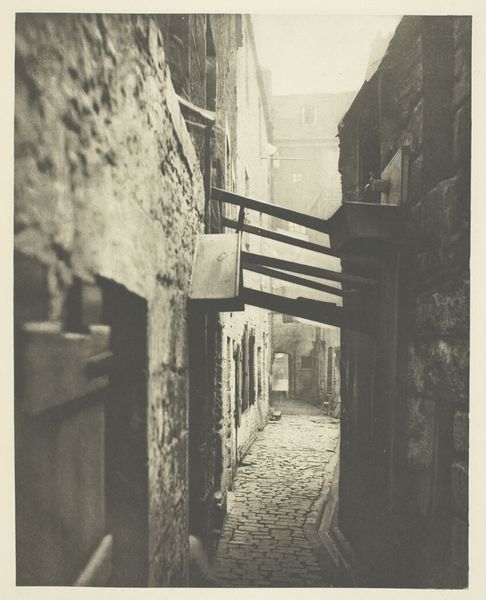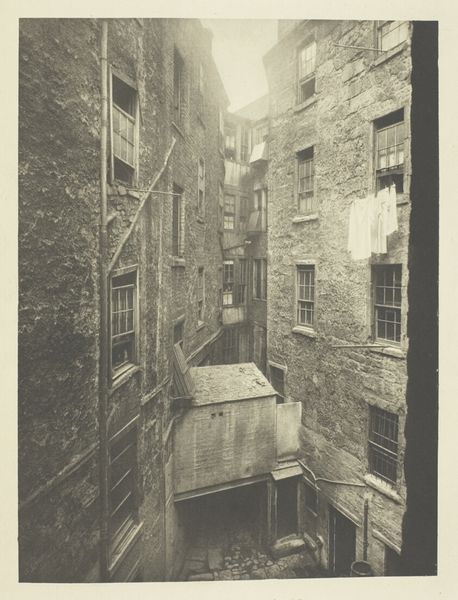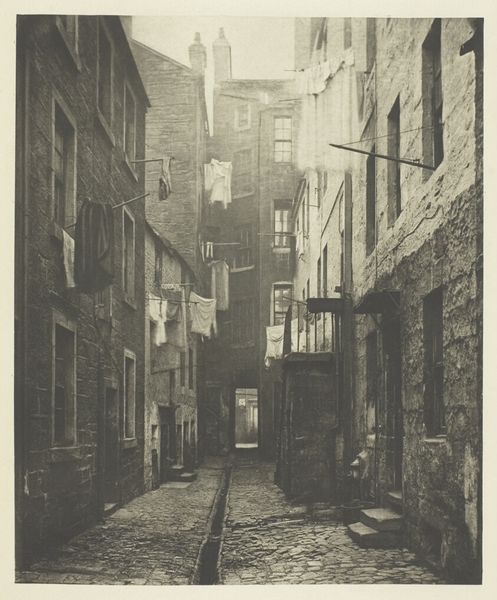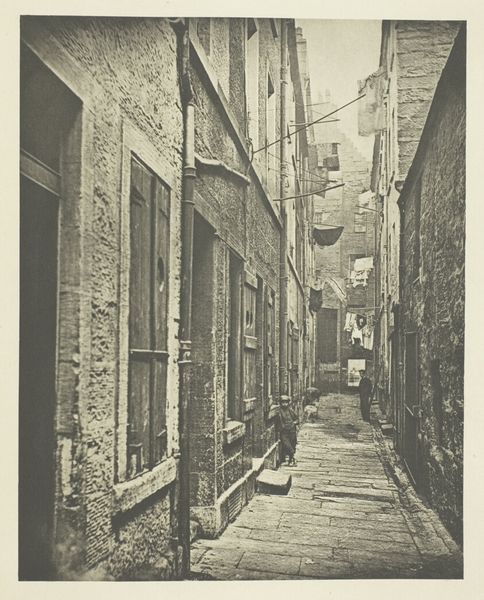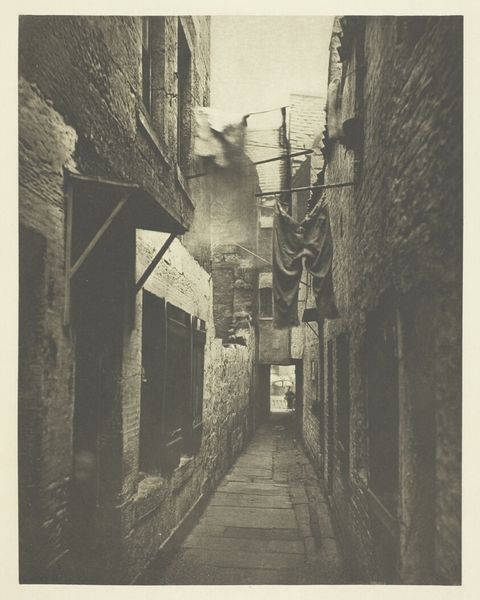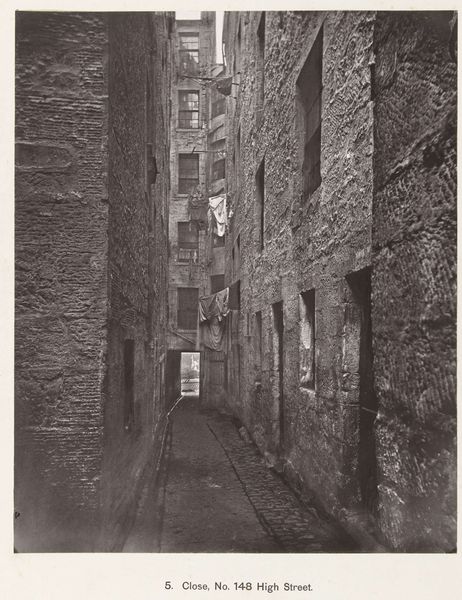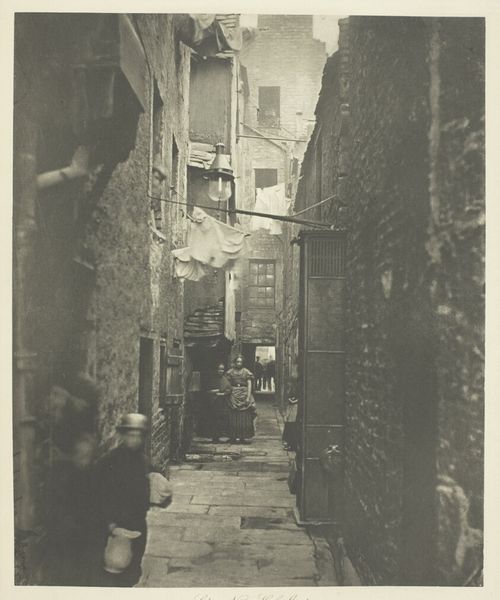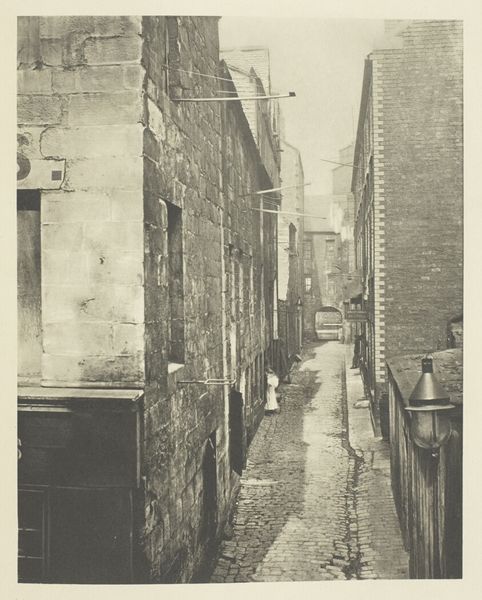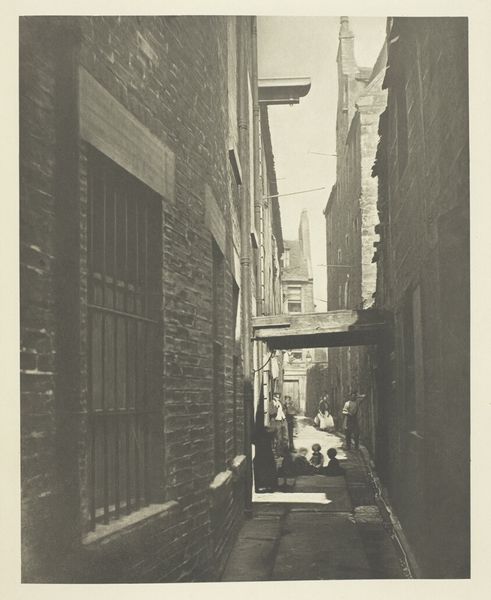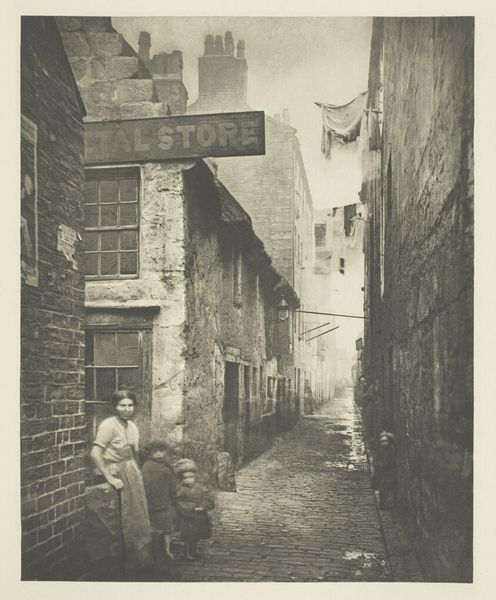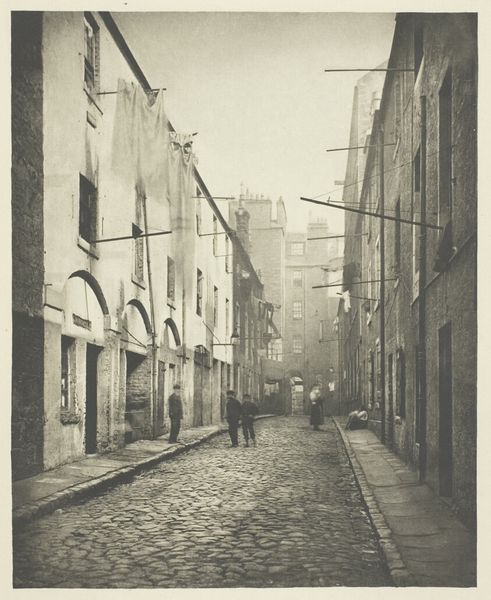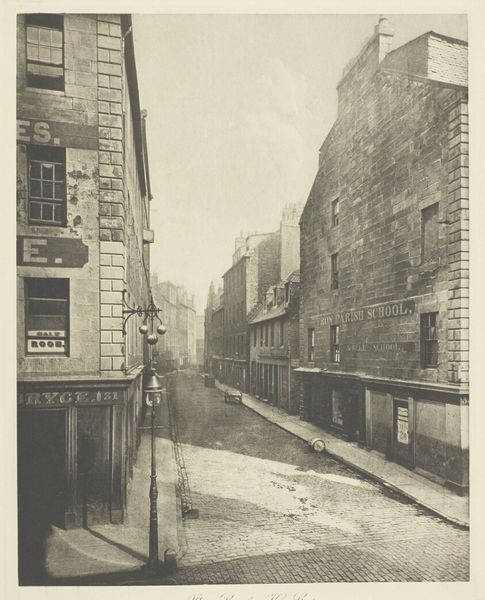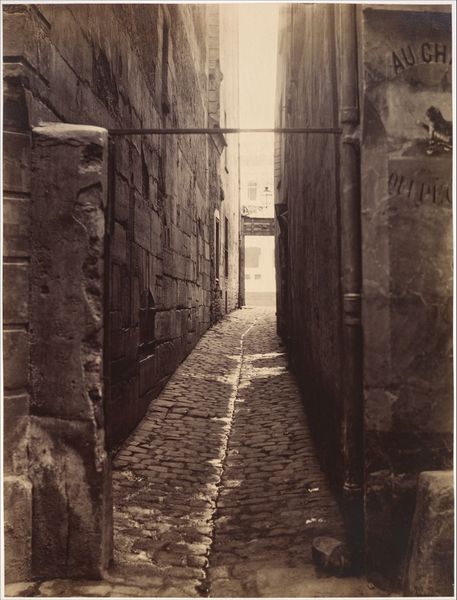
etching, photography
#
16_19th-century
#
etching
#
street-photography
#
photography
Dimensions: 21.8 × 17.4 cm (image); 37.8 × 27.5 cm (paper)
Copyright: Public Domain
Curator: Standing before us is Thomas Annan's "Close No. 148 High Street," a photograph created in 1868, now residing here at the Art Institute of Chicago. Editor: What strikes me immediately is its stark verticality and oppressive feeling. The alleyway feels almost like a descending tunnel, incredibly grim. Curator: Precisely. The photograph presents a stark depiction of urban life in 19th-century Glasgow, utilizing etching in its photographic printing process to highlight this drama. Notice how Annan orchestrates tonal contrasts—the deep shadows versus the sliver of light at the alley’s end—it's incredibly effective, almost a study in contrasts. Editor: Yes, and consider the materials! Look at the sheer physicality of those rough-hewn stone walls and the narrowness of the cobbled lane. It’s less about aesthetics and more about the brutal realities faced daily by the inhabitants of such a close. Washing hung out to dry between the high-rises speaks to a relentless routine of survival. The work involved in merely existing is very evident here. Curator: Without question. However, the arrangement of compositional elements also serves a crucial role. The linear perspective draws the eye inexorably into the depth of the photograph, using the very geometry to emphasize confinement and entrapment. The off-center placement gives a dynamic feel, breaking with predictable conventions. Editor: True. Yet, if we consider Annan’s methods, how he spent considerable time carefully documenting these areas before urban clearances altered the city's structure. We are reminded this is as much a historical document of material and social conditions, particularly living and working practices of ordinary Glaswegians as it is artistic rendering. It’s a portrait of a working-class world, not just shapes and tonalities. Curator: I concur, of course. The artistic choices underscore and support the historical and social context. Editor: Ultimately, a photograph which brings a sense of urgent record from the city's underbelly. Curator: Leaving us, therefore, with lingering questions on space and structure.
Comments
No comments
Be the first to comment and join the conversation on the ultimate creative platform.
